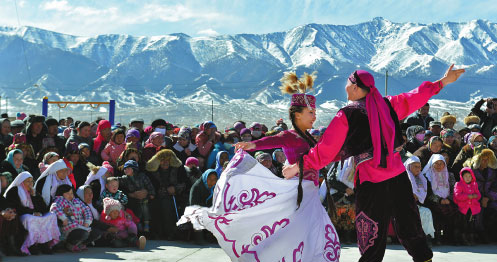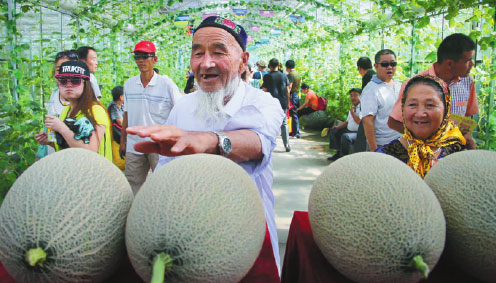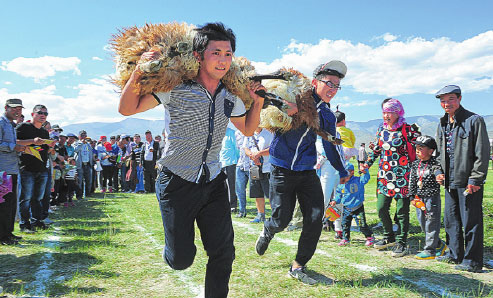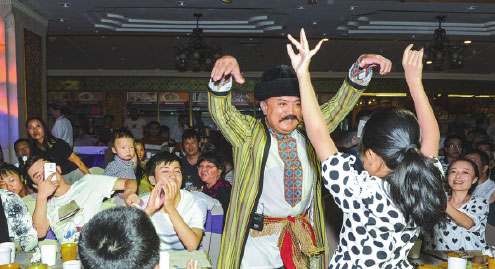Snapshots of a rich heritage
The Xinjiang Uygur autonomous region has been a long-standing home to 13 ethnic groups. After the founding of the People's Republic of China in 1949, and the establishment of the region in 1955, its people have witnessed tremendous progress both economically and socially. A series of photographs, chosen by China Daily, highlight just some aspects of the lives of the region's 22 million people.
|
Kazakh villagers celebrate the Nowruz festival in Saerqiaoke township, in Xinjiang's Barkol Kazakh autonomous county, against a majestic backdrop. The annual festival is a holiday for Kazakh and Uygur ethnic groups and they mark it during the spring equinox, the beginning of the new year. Zhang Jiangang / for China Daily |
|
Herdsmen of the Tajik ethnic group catch sheep in an event steeped in tradition to welcome spring in the Tashi Kuergan Tajik autonomous county in Xinjiang, on March 18. Jiang Wenyao / Xinhua |
|
Hamdulla, 78, and his wife visit a melon fair in Xinjiang's Hami prefecture in July. The Hami melon, a type of cantaloupe, with an off-white, yellow, pink or green rind, derives its name from Hami, which was registered nationally as the birthplace of the fruit. Li Xiongxin / for China Daily |
|
Sheep are carried by herdsmen in a race in Yanchi township, Yiwu county, to celebrate the harvest in August. Li Hua / Xinhua |
|
Uygur artists perform traditional dances for tourists at the Xinjiang International Grand Bazaar in Urumqi, one of the largest in the world. Wang Fei / Xinhua |
|
Women examine cloth at the Kashgar Grand Bazaar. Bazaar, originating from Persian, means market or fair, and this one covers an area of 200,000 square meters. Kashgar, rich in history, is a modern major distribution center and played an important role on the Silk Road. Shen Qiao / Xinhua |
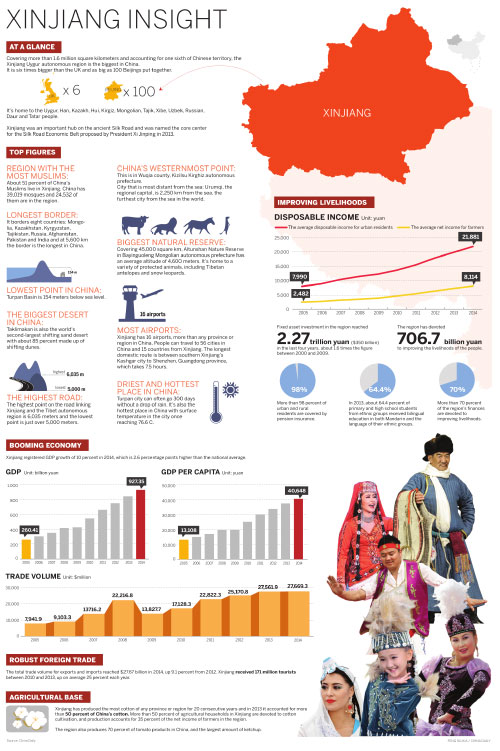
(China Daily 10/02/2015 page6)




